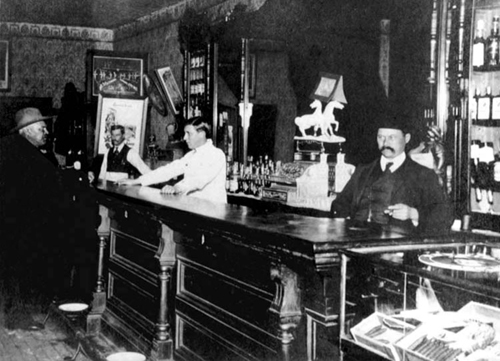Grocery Stores
and Sample Rooms
Carl’s father, August Sandburg
didn’t spend much money on liquor of any kind. He
worked too hard for his money to throw it away by
that method. The elder Sandburg was always afraid
his family might suffer from want. He would do
anything in his power to avoid that kind of
circumstance. He was a disciplined and frugal man.
With the coming of winter,
August would buy a pint of grain alcohol from one
of the druggists in the city. He added a teaspoon
of it to a cup of hot black coffee and sipped it
slowly with much smacking of his lips. Perhaps it
warmed him after a long day of wielding a
sledgehammer. He would make the pint last all
winter.
Of course, there were other
ways of imbibing alcohol–patent medicines. They
were widely advertised and relatively inexpensive.
A small amount could make a person feel ever so
much better.
Respectable women didn’t go
into saloons, but they could purchase a bottle of
Hostetter’s Bitters or Lydia Pinkham’s Vegetable
Compound to sooth their nerves. Pinkham’s
contained pleurisy root, fenugreek, unicorn root,
black cohash and 18 percent alcohol. Hostetter’s
was even more potent. Mrs. Pinkham began
advertising the remedy nationally in 1875. It was
sold as a product for the particular complaints of
women. Alcohol does relieve muscular stress, acts
as a mild pain killer and may affect an
individual’s mood.
|
|
|
| Date | Title |
| April 8, 2013 | Grocery Stores and Sample Rooms |
| April 1, 2013 | A Hearty Breakfast |
| March 25, 2013 | The Lost Wallpaper Legend |
| March 18, 2013 | Martin G. Sandburg |
| March 4, 2013 | The Edison Talking Machine |
| February 25, 2013 | Joe Elser, Civil War Veteran |
| February 18, 2013 | Remember the Maine... |
| February 11, 2013 | Lincoln's Birthday |
| February 4, 2013 | Curiosity |
